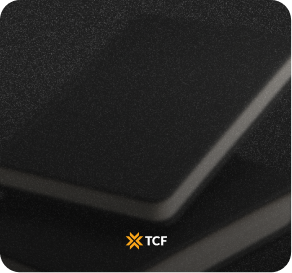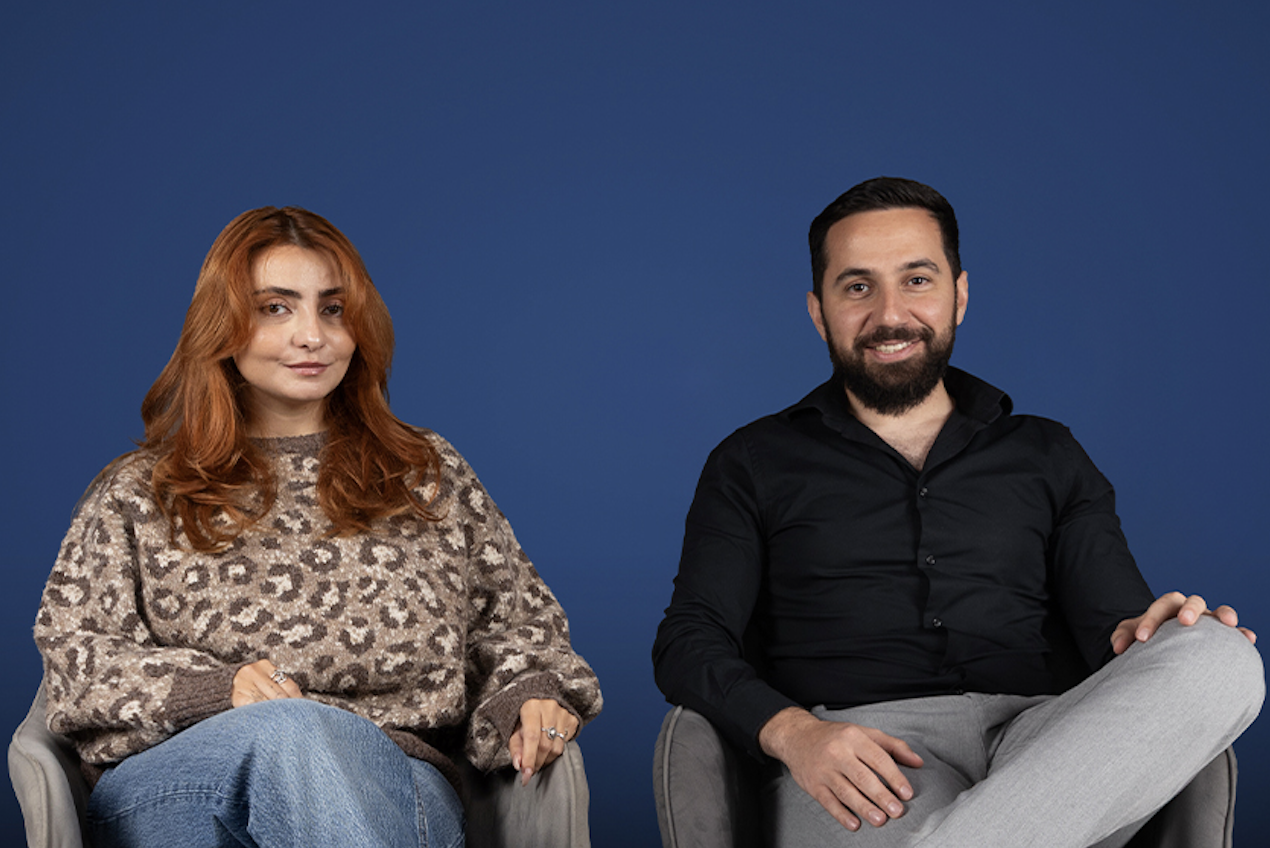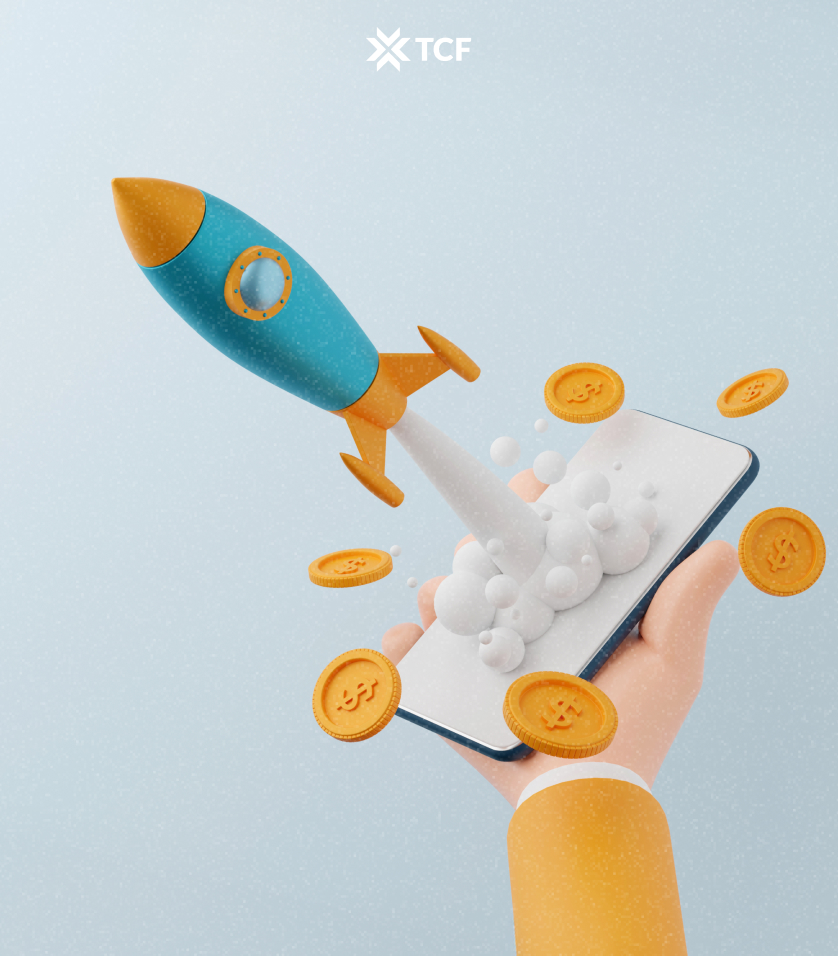We Launched 4x $1M+ Campaigns in 30 Days and We’re Spilling Everything
In January, we hit a milestone even we hadn’t done before: we launched 4 crowdfunding campaigns, all within 30 days, and each one raised over $1 million.
Four different products. Four different creators. Four different strategies. And yet, every single one crossed the $1M line, bringing in over $7.8M combined in a single month.
This wasn’t a coincidence. These campaigns were months in the making, and while each one had its own challenges, they shared a few key traits: validated demand, strong offers, and data-driven execution across every stage of the funnel.
In this post, we’re breaking down all four campaigns. You’ll see what made them successful, what we focused on behind the scenes, and the patterns we’ve seen across dozens of million-dollar launches that helped make this month possible.
Let’s dive in.
[[cta2]]
1. AEKE K1: The Smart Home Gym That Raised $1.4M
Total Raised: $1,524,943
Total Backers: 678
Kickstarter Goal: $48,000
Conversion Rate: Up to 2% at launch, 0.4% campaign average
Ads Revenue Alone: $970,944
AEKE K1 set out to do what most smart home gym startups only dream about: enter the global fitness tech market with a premium, AI-powered product and a $500,000 funding goal. Although the public goal was $48,000, we strategically set it low to hit 100% fast, unlock Kickstarter’s algorithm boost, and build early social proof, while planning the campaign to hit $500,000+ from day one. We almost tripled it, finishing at $1.4M with over 600 high-ticket backers. And this didn’t happen by accident.

What Worked Before Launch
We implemented a deposit-based reservation system, allowing early adopters to secure an exclusive offer upon launch. This approach not only generated early interest but also built a strong subscriber base for our newsletter, ensuring that potential backers stayed informed about product updates and launch details. While some customers immediately placed deposits, others were converted through a well-structured email sequence, typically after receiving two to three emails detailing the product’s features and value proposition.
Paid Ads Did the Heavy Lifting
Paid advertising was the campaign’s biggest revenue driver, accounting for nearly $970,944, over two-thirds of the total raised.
We started by testing creative angles during pre-launch, narrowing in on what resonated: space-saving design, real-time AI coaching, and freedom from gym schedules. These angles were then adapted across short-form videos, image carousels, and UGC-style reviews.
What worked best:
- Video-first creatives that showed the product in use, especially side-by-side comparisons with traditional equipment
- Founder-led messaging that emphasized vision and credibility
- Strong lead magnets and retargeting, driving warm traffic back to the page during peak momentum windows
Throughout the campaign, we actively optimized based on ROAS, with the highest-performing audiences coming from custom lookalikes built from our reservation funnel and early email list.
The result? A ROAS of 6.14, exceptional for a high-ticket product and proof that paid traffic, when paired with warm intent and strong trust signals, can scale well beyond the usual Kickstarter ceiling.
What really worked: starting with warmed-up leads from our deposit funnel. That audience converted fast and helped drive early momentum, which made the ads even more efficient as the campaign took off.
This wasn’t spray-and-pray. Every dollar was tracked, tested, and scaled with intent, and it paid off.
What Worked Beyond Ads
While paid ads were the top revenue driver, other marketing channels played a crucial role in building trust and accelerating conversions.
Influencer marketing was especially effective. Fitness and gym-focused creators shared authentic, hands-on reviews that showcased AEKE in real-world use. These were practical demos that addressed questions, showed results, and helped convince backers who needed to see it in action before pledging.
Media coverage backed that up with third-party authority. Articles in New Atlas, Homecrux, and Info Hightech introduced AEKE to readers who rely on those outlets for serious product vetting, adding a layer of legitimacy no ad can match.
We also partnered with backer communities, which featured AEKE in curated newsletters followed by experienced Kickstarter supporters.These channels helped AEKE reach people already primed to support crowdfunding projects, contributing to early momentum and a stronger overall conversion rate.
Finally, we maintained continuous updates throughout the campaign, which kept backers informed and engaged. Sharing progress, plans, and milestones in real time helped reinforce transparency and made backers feel part of the journey.
These channels helped create the trust and consistency that turned interest into $1.4M in funding.
Events That Built Real-World Trust
To give backers a closer look at AEKE, we organized two key events during the campaign. First, an offline demo day where attendees could test the product in person, interact with the product manager, and get answers face-to-face. This helped validate the experience for early supporters and gave us strong visual content for the campaign.
Then, we hosted a live-streamed workout and Q&A, where a gym enthusiast demonstrated AEKE in action while the product manager answered questions in real time. A giveaway during the stream boosted engagement and brought in new traffic, especially from those who hadn’t yet pledged.
Both events helped bridge the gap between curiosity and commitment, showing that AEKE wasn’t just another concept, but a fully functional product backed by a team that was present and responsive.
A High-Ticket Offer That Converted
From day one, we knew AEKE had what most products don’t: proof. It had already won a Red Dot Design Award, mass production was underway before launch, and the offer was strong: a premium, AI-powered smart gym with no subscription fees, offered to early backers at nearly 50% off retail. That combination of readiness and value made it easy for backers to trust the campaign, even at a very high ticket price.
2. Night Storm X1: The 4K Night-Vision Binoculars That Hit $1.7M
Total Raised: $1,716,994
Total Backers: 8,690
Kickstarter Goal: $5,000 (internal target ≈ $500K)
Average Conversion Rate: 4.38 %
Night Storm X1 launched into a crowded optics market with a bold promise: true 4K night vision at a price the average outdoor enthusiast could afford. A tiny public goal of $5K let the campaign hit 100 percent in minutes, rocket up Kickstarter’s discovery feed, and create instant social proof. The team’s real objective was half a million dollars, yet they finished north of $1.7M and nearly 9K backers.

What Worked Before Launch
- Prelaunch.com lead gen and reservations collected thousands of qualified emails and small deposits, plus survey feedback that shaped messaging and buyer personas.
- Embargoed PR outreach lined up launch-day articles, guaranteeing fresh traffic the moment the page went live.
- Real-world content production delivered unedited 4K night footage and side-by-side comparisons, ready for the campaign page and ad creatives.
Paid Ads Did the Heavy Lifting
Advertising was the top revenue engine and achieved a 3.3 ROAS. Surveys from the pre-launch list and early backers revealed new interests and use-cases, hunting, security, wildlife photography, that fed fresh targeting tests. Creatives were updated weekly with:
- Short clips shot through the prototype, no post-processing
- “Before vs after” comparisons against legacy night-vision brands
- Credibility overlays highlighting CES exhibit and design awards
Continuous creative refresh kept frequency fatigue low while retargeting pools grew. The result: ad spend stayed efficient and scaled smoothly to seven figures.
What Worked Beyond Ads
- Influencer and media reviews
We shipped early prototypes to a select group of outdoor and tech creators, who posted unfiltered night footage, hands-on reviews, and side-by-side comparisons. Besides building trust, these videos also performed well as ad creatives and were frequently cited by backers in comments and messages.
On the PR side, coverage in YankoDesign, Digital Trends, and Gear Patrol helped position Night Storm X1 as a serious innovation in the optics space, not just a crowdfunding gimmick. This combination of expert reviews and third-party validation added credibility that paid ads alone couldn’t replicate.
- Backer communities
Night Storm X1 was featured in curated newsletters read by experienced Kickstarter supporters, driving early, high-converting traffic. These placements gave the campaign a visibility boost right when momentum mattered most.
- Consistent updates and rapid customer support
We reassured prospects and helped maintain a four-plus percent conversion rate. The transparency helped reduce drop-offs and turned undecided visitors into confident backers.
- Top of Kickstarter’s gadget category
Climbing to the top of Kickstarter’s gadget category generated significant organic platform traffic once the campaign ranked on the first page. That visibility also helped attract media coverage and more influencer attention mid-campaign.
- Events that drove trust
To further reinforce credibility, we showcased Night Storm X1 at CES 2025, where journalists and early users got hands-on time with the product. Their feedback and footage became part of our ad library and campaign content.
We also ran real-world field tests with outdoor media, capturing raw 4K footage in hunting and camping scenarios that confirmed the product’s performance beyond the spec sheet.
Offers, Positioning, and What Made People Convert
Night Storm X1’s offer was built to convert from day one:
- Early-bird pricing made the $598 retail price feel like a steal at $278–$298.
- Bundles and seasonal offers (like the Christmas Special with free accessories) boosted perceived value and average order value.
- Stretch goal at $800K unlocked a premium EVA case, limited to the first 5000 backers, creating urgency without discounting.
- 2-pack and add-on tiers let serious users upgrade without hesitation.
Positioning was sharp: we framed Night Storm as both a pro-level tool and a recreational essential. Red Dot and Muse Gold design awards added instant credibility, and competitive visuals showed exactly how it outperformed higher-priced legacy gear.
Every offer, price tier, and product message worked together to make this feel like a deal worth acting on, and 8,000+ backers agreed.
3. Looktech AI Glasses: Smart, Private and Personalized. Fully-Funded at $1.18 M
Total Raised: $1,190,925
Total Backers: 4,768
Kickstarter Goal: $19,109
Looktech entered the smart-glasses race with one clear promise, hands-free AI assistance that protects your privacy, lasts all day, and weighs just 37 g. By launching weeks before rival projects, Looktech grabbed the spotlight early and never let go, crossing one million dollars while competitors were still warming up.

What Worked Before Launch
- Competitor deep dive: we mapped every strength and weakness in the category and positioned Looktech around the four gaps: real AI help, privacy control, 14h battery life, feather-light frame.
- Timing advantage: seeing several similar campaigns on the calendar, we went live first, collecting attention and media before the field got crowded.
- Credibility assets: a CEO-led launch event in China supplied on-page video proof, while prototypes at CES 2025 generated a flood of user-generated clips for ads and socials.
- VIP WhatsApp group: early contributors joined a private chat on WhatsApp where Looktech’s brand manager Grace, answered their questions in real time and logged feedback for the product team.
Advertising Was the Revenue Engine
Looktech’s campaign was powered by a robust paid advertising engine, which brought in over $694,987 during the live period from an ad spend of $198,371, resulting in a live ROAS of 3.5. With over 12.4 million impressions and a reach of 2.5 million, the campaign achieved wide exposure across key markets.
We targeted high-intent segments like sunglasses enthusiasts, AR/VR users, photographers, IT professionals, and AI early adopters. This targeting was consistent across both the lead generation and Kickstarter live campaign stages.
What worked best:
- Video-first creatives that highlighted Looktech’s lightweight design and AI-powered features
- Competitive side-by-side comparisons with other AI glasses
- A split-screen TikTok-style video (even without a functional sample) that drove over $20,000 in tracked conversions
- UGC-style footage captured at CES 2025, turned into ads that felt real and credible
Social-driven ad creatives alone generated $280,000 in tracked revenue, indicating that Looktech’s crowdfunding campaign benefited not just from paid reach but also from the authenticity of community-sourced content.
In short, paid ads were the #1 revenue driver, and with continuous creative testing and high-converting audience segments, they scaled smoothly and efficiently.
What Worked Beyond Ads
Looktech’s momentum didn’t come from ads alone. The team built a strong foundation of trust and engagement through earned media, creator partnerships, and backer community newsletters.
- Influencer content and UGC at CES
Looktech team showcased its AI glasses prototype at CES 2025, generating a wave of user-generated content we later repurposed across socials, email, and ads. The team also partnered with a TikToker to produce a split-screen promo video, even without sending out a working sample.
The result? $20,000 in tracked conversions from that one video alone.
- 123 PR articles, $60K in tracked revenue
We combined mainstream and niche press outreach to maximize visibility. WIRED, VentureBeat, Digital Trends, and Cybernews were just a few of the 123 outlets that covered Looktech AI Glasses crowdfunding campaign
Total PR-driven revenue? $60,000.
- WhatsApp community + personal touch
Before launch, we built a VIP group of over 600 leads inside WhatsApp, turning early interest into active support. Post-launch, Looktech’s brand manager Grace personally engaged with backers, using feedback to fine-tune messaging and strengthen loyalty. That one-to-one connection led to $18,898 in direct WhatsApp sales.
- Cross-promotions and email
Email marketing efforts drove another $19K+, with an average 42.9% open rate and 2.68% click-through rate across the campaign. Cross-promotions with other creators and campaigns on Kickstarter added an extra $6,000 in revenue.
Together, these efforts created the credibility and familiarity needed to convert thousands of backers, especially important for a first-time creator in a sensitive product category like smart AI glasses.
Offers, Storytelling, and Smart Scaling
Once Looktech AI Glasses had attention and trust, the next step was to convert interest into action
Irresistible Rewards & Offers
- Super Early Bird tiers offered up to 43% off MSRP
- Seasonal special offers (Xmas, V-Day) included exclusive perks like free engraving or accessories
- High-value tiers encouraged multi-unit orders with free charging cases and add-ons
- Prescription lens support was built into the post-campaign flow, removing friction for buyers
Emotional & Use-Case Driven Positioning
- Framed as more than just “tech glasses,” but a hands-free way to capture life’s beautiful moments
- AI capabilities (powered by GPT-4o) tied directly to real-world use: parenting, travel, daily tasks
- Privacy-first design and offline functionality tackled AI skepticism head-on
4. Circular Ring 2: How We Turned a Crowdfunding Nightmare Into a $3.5M Success Story
- Raised: $4,078,500
- Backers: 11,969
- Category: Health Tech Wearables
- The most funded health ring on Kickstarter
- Average AOV: $300+
Circular Ring 2 is a next-gen smart ring that tracks 140+ health metrics, including heart rhythm via FDA-cleared ECG, and delivers AI-powered wellness insights without a subscription. The goal of the campaign? Turn this ambitious health wearable into a multi-million dollar crowdfunding success and redefine what a smart ring can do.

Turning Roadblocks Into Results
When Circular Ring 2 joined forces with TCF, the mission was to launch a health tech product with the potential to break records. Butat the last minute, things got messy.
Kickstarter flagged the page just 24 hours before launch, banning the phrases “medical-grade” and “FDA-cleared”, two of the ring’s biggest differentiators. The entire brand message had to be restructured overnight.
Instead of panicking, we executed a dual messaging strategy:
- On Kickstarter: Reframed messaging around user benefits, lifestyle impact, and sleek design.
- Off-platform (ads, email, social): Emphasized the regulatory breakthroughs and technical advantages the ring delivered.
At the same time, they leaned hard into community. With no product in hand, the founders became the face of the campaign, filming milestone videos at iconic Paris locations. We built trust through transparency, responded to early questions in WhatsApp groups, and created a founder-led narrative that made the campaign feel human, not corporate.
Smart Pricing, Smarter Revenue
Before settling on a final price, we used Prelaunch.com to run an A/B pricing test between $209 and $239.
The result? No drop in conversions at the higher tier. That insight unlocked an instant 14% boost in revenue per unit by locking in $239 from day one.
Later, bundles and smart add-ons like travel cases, insurance, and multi-ring offers pushed the average order value past $300, a 25% lift above the base price without increasing ad spend.
Launch Day Wins and Momentum Mastery
Thanks to a month of community-building and email warmup, launch day exploded:
- Fully funded in 4 minutes
- $200K in under 2 hours
- $1M by day 10
- $3.5M+ total across campaign and late pledges
The foundation?
- 2,696 product reservations
- 7,486 email subscribers
- 1,400+ people in active WhatsApp groups
Backer engagement stayed high through 70+ content pieces, 20+ video reels, and fresh creatives every week. Even organic social drove $132K+ in tracked revenue.
Content That Kept Backers Engaged
With no product samples or influencer reviews to rely on, the Circular Ring 2 campaign leaned fully into content and it paid off.
Over the course of the campaign, TCF team created more than 70 unique assets, including 20+ short-form reels and weekly content drops that showcased different product features, benefits, and color options. Visuals were tied to seasonal themes, comparison charts highlighted advantages over competitors, and every piece reinforced the ring’s premium positioning.
Importantly, the founders stayed front and center. Whether announcing milestones from Paris landmarks or demoing features themselves, their presence gave the campaign a human touch that built trust.
This steady stream of fresh, relevant content kept engagement high across every platform and drove over $132,000 in organic social revenue alone.
A Cross-Channel Strategy That Reached Beyond Kickstarter
To find the right backers, the team used a well-structured multi-platform strategy that targeted different audience types across key digital spaces:
- Meta (Facebook/Instagram): Main channel for discovery and retargeting, powered by Advantage+ for ongoing audience optimization
- Google Search & YouTube: Targeted high-intent searches like “smart ring” and “health wearable,” supported by Performance Max for full-funnel storytelling
- Reddit: Engaged niche communities, especially smartwatch and health tech subreddits, with better-than-expected results
- TikTok: Reached younger audiences with lifestyle-driven, short-form content
- LinkedIn: Built brand credibility in the professional health tech space
One key insight: many backers weren’t experienced with crowdfunding. The campaign reached beyond Kickstarter regulars and brought in first-time backers who resonated with the product and the messaging, showing the value of thoughtful, wide-reaching targeting.
What You Can Steal: Actionable Tips From $7.8M in Campaign Wins
It’s one thing to admire these campaigns. It’s another to build one. Whether you’re prepping your first launch or scaling up your next, here are the repeatable strategies that made these campaigns convert and how you can apply them to your own.
1. Price Test Before You Launch
Don’t guess your price, test it. Both Circular Ring 2 and AEKE ran A/B tests between two close price points ($209 vs. $239, $249 vs. $289) and found that higher tiers didn’t hurt conversion. In fact, they boosted revenue per visitor by up to 14%.
What to do: Use Prelaunch.com or a test funnel to validate pricing. Optimize for revenue per session, not just conversion rate.
2. Build a Warm Community, Not Just a List
Campaigns like Circular and Night Storm didn’t just collect emails. They built belief. With WhatsApp groups, deposit-based reservations, and tailored email flows, they created communities ready to back on day one.
What to do: Create segmented email flows for subscribers and reservers. Open up a VIP WhatsApp group. Engage early, respond fast, and let your founders show up as humans.
3. Launch With More Than Just Ads
Yes, paid ads drove the bulk of revenue across all four campaigns, but none of them relied on ads alone. PR placements, influencer content, CES footage, and founder-led storytelling made every dollar stretch further.
What to do: Line up PR before launch. Ship pre-production units if you can. If you can’t, lean on founder videos, demos, and storytelling that builds trust without a product in hand.
4. Use Events to Turn Skeptics Into Backers
AEKE and Night Storm both used real-time events, demo days, livestreams, and CES coverage, to validate their product and drive pledges. These weren’t just fluff; they became some of their strongest trust assets.
What to do: Host a Q&A, livestream a milestone, or show your prototype in action. Even a simple founder AMA can turn curiosity into commitment.
5. Refresh Your Creatives Weekly
Every campaign here ran fresh creatives 1–2 times per week. That included new angles, updated UGC, seasonal hooks, and milestone-driven content. Circular Ring 2 created over 70 visuals and kept performance high to the end.
What to do: Plan your creative calendar before launch. Include launch-day, stretch goal, social proof, testimonial, and comparison creatives. Don’t let your ads go stale.
6. Offer Add-Ons That Actually Add Value
The difference between a $239 backer and a $300 backer? Smart add-ons. Circular Ring 2 and Night Storm X1 used bundles, protection plans, accessories, and multi-unit tiers to lift AOV without adding friction.
What to do: Don’t just add stuff for the sake of upselling. Think about what your buyer would actually want next, then bundle it in with purpose.
7. Own Your Limitations, Then Flip Them Into Strengths
No samples? No problem. Circular Ring 2 leaned into founder storytelling and transparency. No influencers? AEKE leaned into expert-led product breakdowns. Every “weakness” became a reason to trust.
What to do: If you’re missing something most campaigns rely on, explain it instead of trying to hide it. Use it to reinforce why your campaign is different, and why backers matter.
8. Don’t Try to Do It Alone
All four campaigns were built in collaboration with TCF, the team behind dozens of seven-figure launches. From strategy and messaging to paid media, PR, Influencer marketing, creative, and CRO, we handled every piece of the funnel.
What to do: If you're launching a product that deserves to go big, bring in a team that knows how to get it there. We’ve done it before, and we’re ready to do it again.
Conclusion
Four campaigns. Four different categories. Over $7.8 million raised in 30 days.
None of these campaigns had perfect conditions. One had no working samples. One faced last-minute platform restrictions. One entered a brutally competitive space. But each of them worked because the right systems were in place.
We didn’t chase virality. We built momentum. We didn’t rely on one ad or one offer. We tested everything, doubled down on what worked, and stayed relentlessly focused on the customer.
If you’re serious about launching something big, remember that this isn’t about luck. It’s about:
- Validating demand before you spend
- Building trust before launch day
- Crafting offers that convert fast and scale even faster
- And staying human, even when you’re running high-performance funnels
These campaigns were bold, but they weren’t outliers. They followed frameworks we’ve tested over and over again.
If you’re building a product worth believing in, we know how to turn it into a campaign worth backing.
Ready to be next?
[[cta2]]






.png)


.png)




